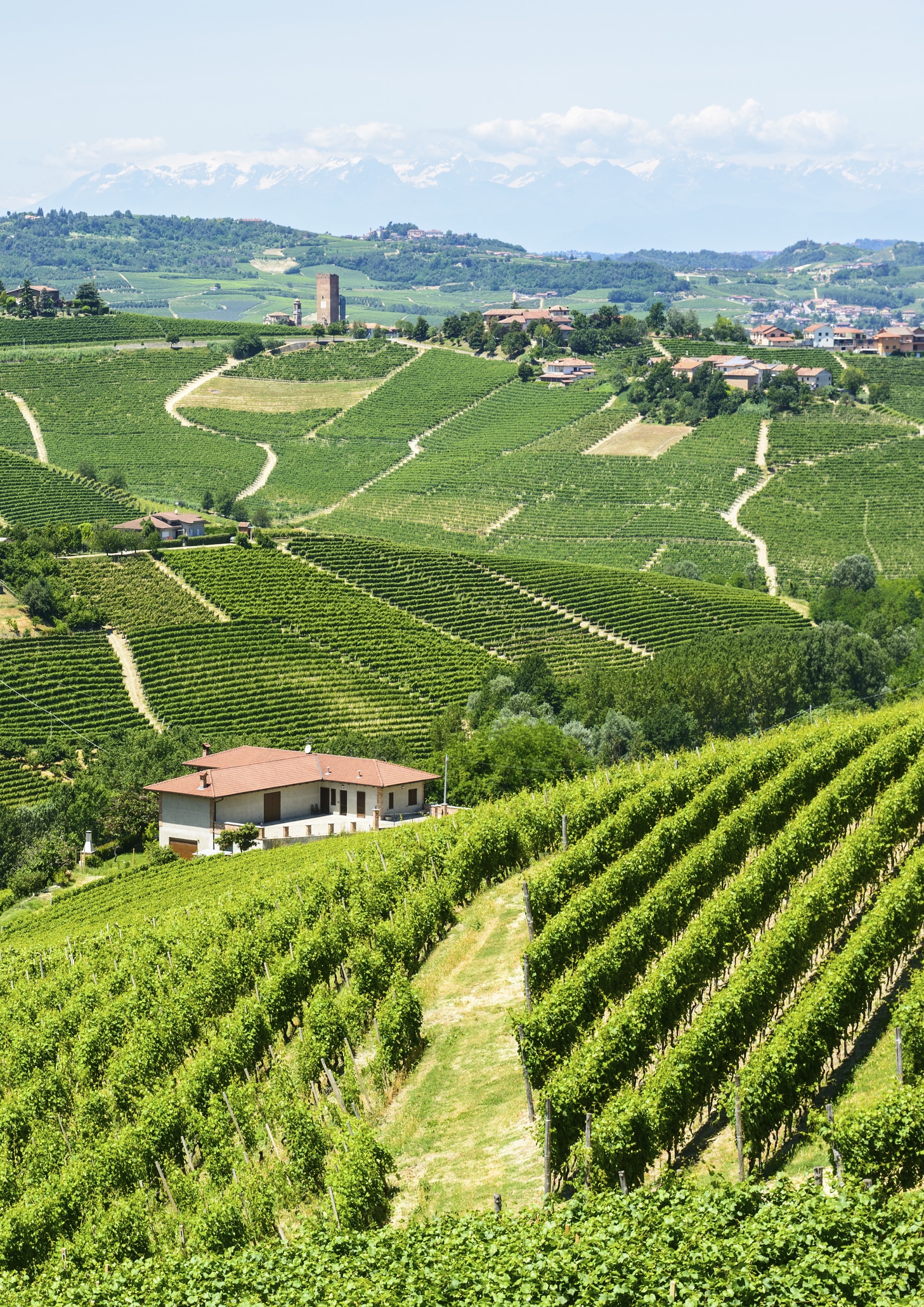Search
Menu

Piedmont—or in Italian, Piemonte (pee-yay-MOHN-tay)—the large region that comprises most of northwestern Italy, has many historical and cultural ties with eastern France. Among the connections is a predilection for surgically dividing its winegrowing areas into multiple layers of defined parcels based on terroir, grape varieties, and past usage. As a result, Piedmont has more wine denominations than any other Italian region—so many that they are piled on top of one another a few levels deep in the prime viticultural zones. And then several of the denominations have gone further to partition themselves further into fractional subzones and individual vineyards—some of which are farmed row by row by different owners.
 Maybe that’s why some people find Piedmont hard to get a handle on. And maybe it’s why many wine lovers find the region endlessly fascinating. Without question, Piedmont is a lot to cover in a single article, and we won’t even try. This initial entry looks at a single province, Cuneo, home to some of Italy’s most famous vineyards, denominations, and wineries.
Maybe that’s why some people find Piedmont hard to get a handle on. And maybe it’s why many wine lovers find the region endlessly fascinating. Without question, Piedmont is a lot to cover in a single article, and we won’t even try. This initial entry looks at a single province, Cuneo, home to some of Italy’s most famous vineyards, denominations, and wineries.
The province of Cuneo (KOO-nay-oh) lies in the southwest of Piedmont, bordering Liguria on the south and France on the west. Those border areas are Alpine, but the rest of the province is less rugged and more suitable for agriculture. The topflight vineyard territory is on the eastern side of Cuneo in an area of undulating hills called the Langhe (LAHN-gay), south of the city of Alba. A second wine zone of note is Roero (ro-EH-ro), another hilly area located north of Langhe across the Tanaro River.
Five DOCGs and six DOCs are fully contained within Langhe and/or Roero. (In addition, Cuneo contains one other outlying DOC and parts of a few other cross-provincial ones.) For the most part, they are focused on single, primarily red grape varieties, and (in another nod to their Burgundian wine pedigree) they often require 100% of that variety, which is unusual in Italy.
Piedmont’s most renowned grape variety is Nebbiolo, and although some fine examples are found a little farther afield, Cuneo is without doubt Nebbiolo’s home base. The two leading expressions of Nebbiolo, Barolo and Barbaresco, are in Langhe not far from Alba. Barolo is one of the two or three most respected Italian wines internationally, and Barbaresco (pictured at top) is not far behind. Nebbiolo is also a focus of Roero, on the other side of the Tanaro from Barolo and Barbaresco, although it also branches out with a white wine made from the local variety Arneis. A fourth denomination based on this fabled grape is Nebbiolo d’Alba, which is a larger area covering much of Roero and Langhe.
The second red grape variety of Piedmont is Barbera, but it is not really a specialty of Cuneo—or at least, Nebbiolo is often seen as a better use of vineyard land here. Nevertheless, there is a prominent denomination for it, Barbera d’Alba.
 Dolcetto is the third important red variety of Piedmont, used typically for simple wines that are adaptable and drinkable without a lot aging. Two of the DOCGs associated with Dolcetto are in Cuneo: Diano d’Alba, a tiny zone in between Barolo and Barbaresco; and Dogliani, a larger area farther south. Like the other two red grape varieties, Dolcetto too has a general denomination, called Dolcetto d’Alba.
Dolcetto is the third important red variety of Piedmont, used typically for simple wines that are adaptable and drinkable without a lot aging. Two of the DOCGs associated with Dolcetto are in Cuneo: Diano d’Alba, a tiny zone in between Barolo and Barbaresco; and Dogliani, a larger area farther south. Like the other two red grape varieties, Dolcetto too has a general denomination, called Dolcetto d’Alba.
Piedmont is known for the high quality of its wines across the board, and that is attested to by the fact that nearly 90% of its wine qualifies for the DOP quality level. Part of the reason for that is that Piedmont has not bought into the IGP concept. While almost all other Italian regions have established second-tier wine areas (called IGPs under EU law) for less strictly controlled and typically less expensive wine production, Piedmont has not. That role, to some extent, has been taken over by larger and less single-minded denominations. For Cuneo province, the broad denomination is Langhe DOC, which despite the name includes both Roero and Langhe. It acts as a fallback for Nebbiolo, Barbera, and Dolcetto producers, as well as for growers of international varieties and some native grapes such as Nascetta and Freisa.
Looking for something really unusual among all these well-known wines? Try to find a bottle of Verduno DOC, a red wine made from Pelaverga Piccolo from a small area inside the Barolo denomination. With only about 13,000 cases produced annually, it may be tough (though not impossible) to find, and if you have to travel to Barolo to get it, one can only admire your dedication.
There are far too many excellent wineries and interesting wines in Cuneo to list here, and there are plenty of magazines and reviewers that regularly make lists of great Barolos and other Langhe and Roero wines. Suffice it to name a few well-known, widely distributed, and reliably high-quality producers, each with varied portfolios covering several Cuneese denominations.